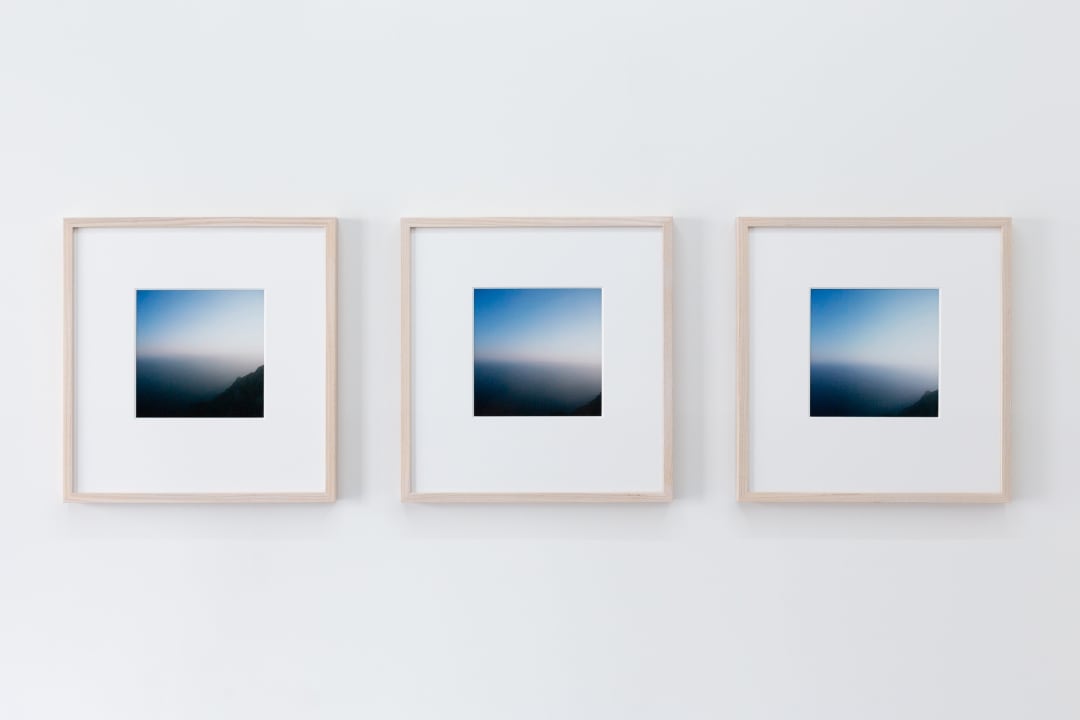Sumer is pleased to present the first New Zealand solo exhibition by Athens-based Australian artist Andrew Hazewinkel, featuring two recent bodies of photographic work: The Antikythera Group (2017) and Asgelatas (Mt Kalamos) (2020).
Hazewinkel’s work often engages archaeological material as a means to shed light on the contemporary legacies of ancient stories, objects and archetypes. As Creative Research Fellow at the Australian Archaeological Institute at Athens, his highly-respected practice blends research-rich content with poetic sensibilities—drawing out connections between ancient objects, which today reside in the mashed-up temporalities of museums, and the personal experiences of the everyday present.
The Antikythera Group—six black and white photographs—take us below the surface of the sea to explore established themes in the artist’s practice: drawing out relationships between the body, the materiality of objects, and the very human act of remembering. The material subject of The Antikythera Group is six corroded 1st c. BCE marble statues, which were retrieved in 1901, from a shipwreck off the coast of the Greek Island of Antikythera (the ship having gone down around 70 BCE). Lying undisturbed on the seabed for 2000 years the surfaces of these Classical bodies have become dramatically excoriated by long exposure to the sea salts, stone eating organisms and other marine encrustations. The non-material subject of these photographs is the psychological and embodied tensions that resides between these badly broken bodies of antiquity and that of our own soft ephemeral bodies.
With Asgelatas (Mt Kalamos) the artist takes us in another direction: to the summit of a marble monolith that juts 450 metres into the sky from the surface of the sea. This group of intimately-scaled images is more concerned with the artist’s interest in atmospheric conditions than materiality of objects. In these seven colour photographs we witness changing conditions of revelation that come with the dawn. The word Asgelatas is an epithet meaning ‘The Radiant”; it is sometimes ascribed to the pre-Christian deity Apollo, but only ever in relation to Mt Kalamos, on the island of Anafi, where it is believed a healing cult devoted to the deity existed. Here it is the everydayness of the dawn that reminds us of the contemporaneity of the remote past, and the connections between our lives and those lived long ago.
There is a universal intimacy present in the combining of the two bodies of work presented in Rushing Air, Flooding Light. Together they take us below and above the surface of the sea; they drive us into our bodies and our inner worlds—one concerns injury, the other healing; both are about ongoingness.
Andrew Hazewinkel’s work has been presented at the Australian Centre for Contemporary Art, the Art Gallery of New South Wales, the National Gallery of Victoria, The Centre for Contemporary Photography Melbourne, The Ian Potter Museum of Art at Melbourne University, Perth Institute of Contemporary Arts, and The British School at Rome. He has a history of active involvement in Australian artist-run initiatives, including presentations at Firstdraft Sydney and Westspace Melbourne, among others. In 2015 he was the sole Australian representative at the 31st Ljubljana Biennial of Graphic Art, following which he presented details of that project at the Boghossian Foundation Villa Emapin Brussels under the artistic direction of Asad Raza. Upcoming projects include collaborations with the Danish Institute at Athens. His work is represented in national, institutional and private collections within Australia and further afield.


